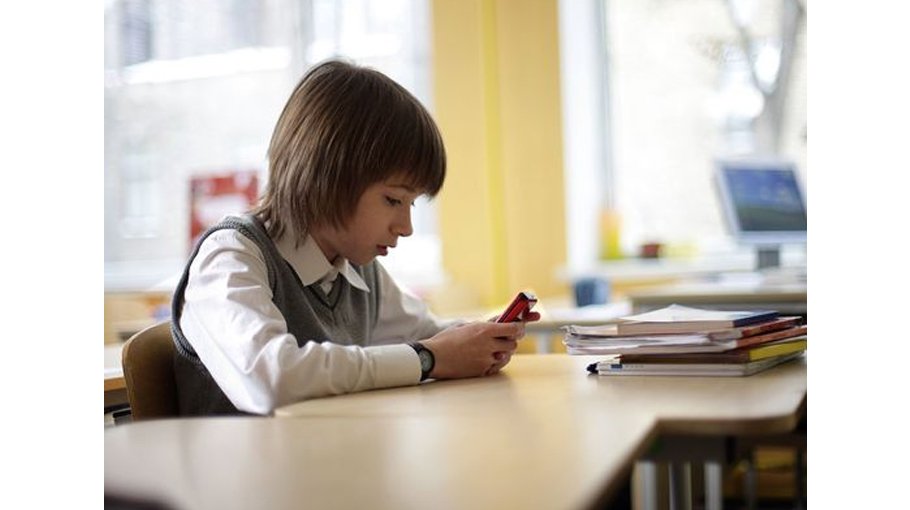Mobile phones in UK schools: A boon or a bane for education?

Is UK government’s new ‘guidance’ to schools to ban the use of mobile phones, old wine in a new bottle? Or is sustained pressure the only way to move the meter, assuming that there is acceptance of the problem?
In an advisory — not a directive — Britain schools have been asked to monitor and prohibit the use of smartphones, ‘schools are places for children to learn, and mobile phones are an unwanted distraction in the classroom. We are providing teachers with the tools to improve behaviour and focus on teaching.’
UK government’s non-binding recommendation allows for schools to choose their own approach, phones can be banned completely or there can be conditional restrictions that allow students to deposit them before classes as is widely the norm. Critics however call the proposal a distraction.
Yes, the debate is not new, mobile phones are ubiquitous in schools and while digital literacy is indisputable, the intersection of technology with education is not above questioning. When a strategy does not get the required results, chipping away as the UK government seems to be doing is not an unreasonable tactic.
UK media watchdog Office of Communications (OFCOM) says 97% children owning a mobile phone by the age of twelve and it is black and white, mobile phones in schools are a diversion and in this safest of spaces for children, exposes them to far more than education.
For argument’s sake, let me ask the question, what is the learning curve that a phone enhances in school? Overwhelmingly, schools are teaching on to least one device, adequate for any research students require during classes. For everything else, last checked there are still teachers doing their job.
A Unesco Global Education Monitoring Report has flagged how mobile distraction takes up to 20 minutes for a student to get back focus, all it takes is a single notification. Now consider how student conversations are only via social media — DMs are sent on either Instagram or Snapchat while WhatsApp is for the adults, they say.
This consumption on socials has been directly associated with bullying, low self-esteem, misinformation, and gaming addiction leading to a loss of learning time, where then is the bandwidth to concentrate heartily on the real reason they are in school? Let us not forget students are still children.
Studying on devices has not stopped students from playing minefield in school and similar loopholes make it easy for mobile usage during breaks or sneaking them into washrooms. For children to rediscover joy in the offline, which allows them to focus better — and we can all agree it can only be beneficial — schools need to enforce a strict policy. When bans are implemented half-heartedly, teachers prefer to look the other way especially when it means engaging with parents.
Fascinatingly, a chunk of resistance comes from families of the students. During the pandemic, falling sick, testing, results were all in quick succession making a mobile a handy tool, things have now fallen back into place with a slightly altered reality.
Children accessing phones to inform families as they commute back from school is reasonable and essentially the difference between banning in class (and breaks) yet allowing students to bring it to the campus where they are deposited under supervision. Trusting the teenager with a gadget is a misnomer, leaving them without checks and balance is unfair.
In the US with episodes of shooting in campuses, the debate becomes tricky as parents say they don’t want to lose touch with their children during an emergency.
Despite the threat of gun violence, experts in America disagree. For one, in a lockdown situation they don’t want the phone distracting a child or making unwelcome noise.
Dozens of educational institutions in Massachusetts, US are experimenting with going old school and found welcome changes in the socio- behavioural construct of their pupils. The corridors where once kids looked down at their phones and walked are ringing with conversations.
After the initial resistance students adjusted quickly — they always do, unlike the parents — and were back to basics, of forging interpersonal relationships and simply, focusing. For a generation that has more online friends than in-person, how can that ever be contested?
The patterns of phone usage in the young are universal in developed and emerging nations. In India, mobile maturity between the ages of 10-14 is 83% which is much advanced than the average. The higher the use, the bigger the gap between parents and children, says a global study by McAfee Corp.
The pandora’s box is open, closing it may not be easy, but neither is it impossible. European countries like France, Italy, and Portugal have restricted mobile phone use in schools and several other countries are lining up. The ask is to regulate technology in education while prioritising well-being of students. In the end there is but one question, does a phone in school add any value to your child or your child’s education?
Jyotsna Mohan is the author of the investigative book ‘Stoned, Shamed, Depressed’. She was also a journalist with NDTV for 15 years.
Source: Gulf News



